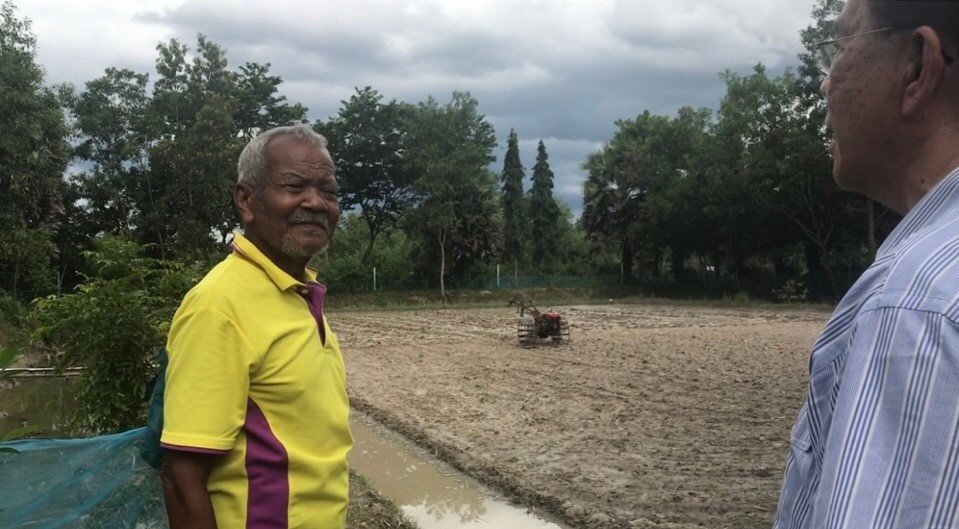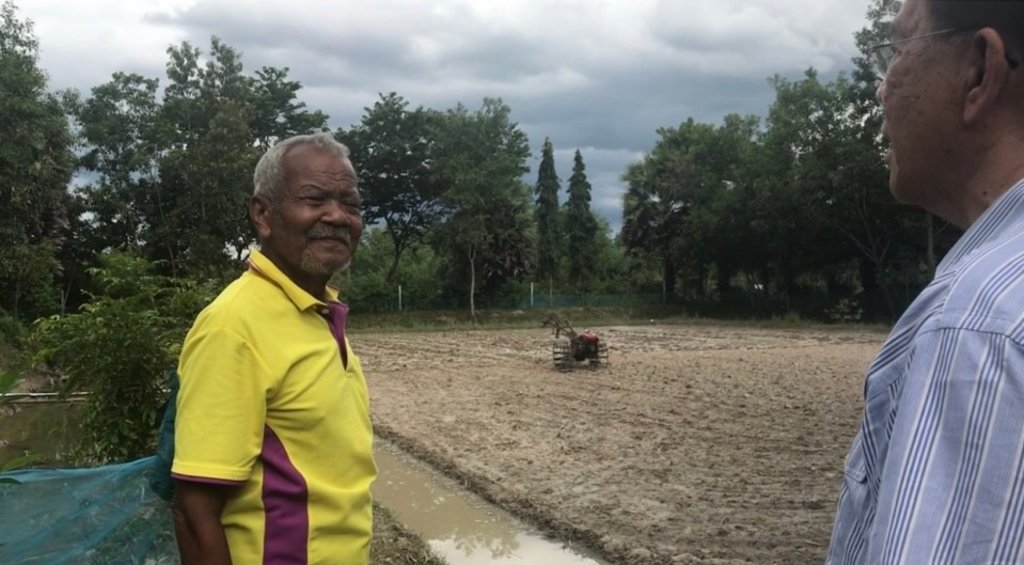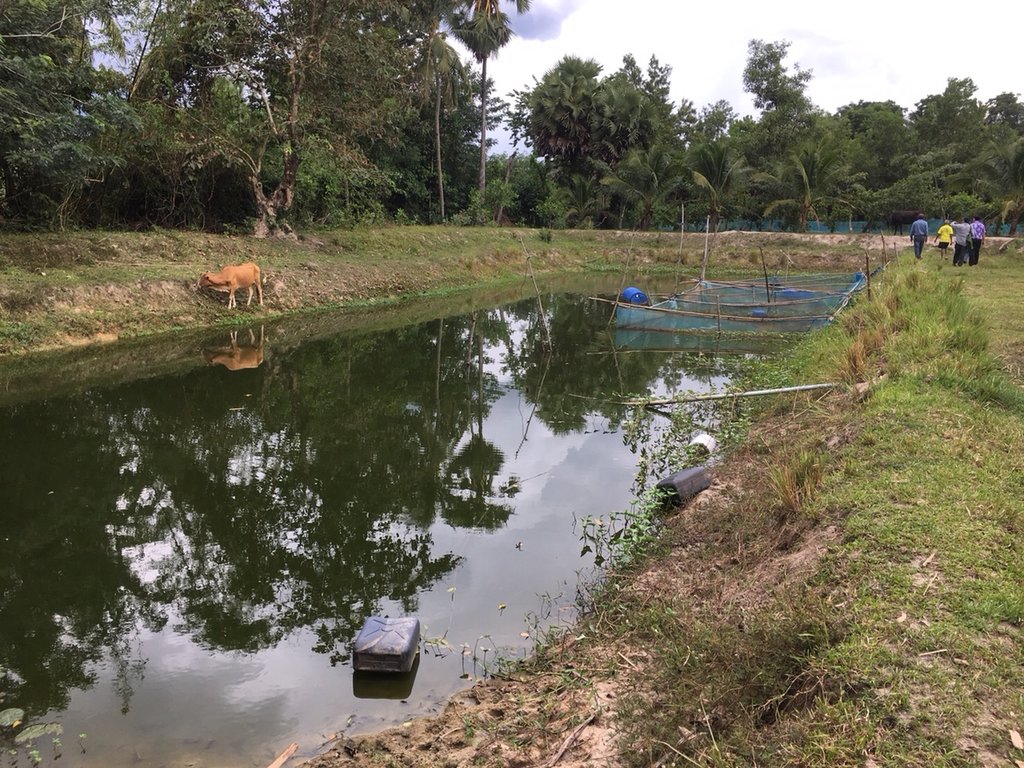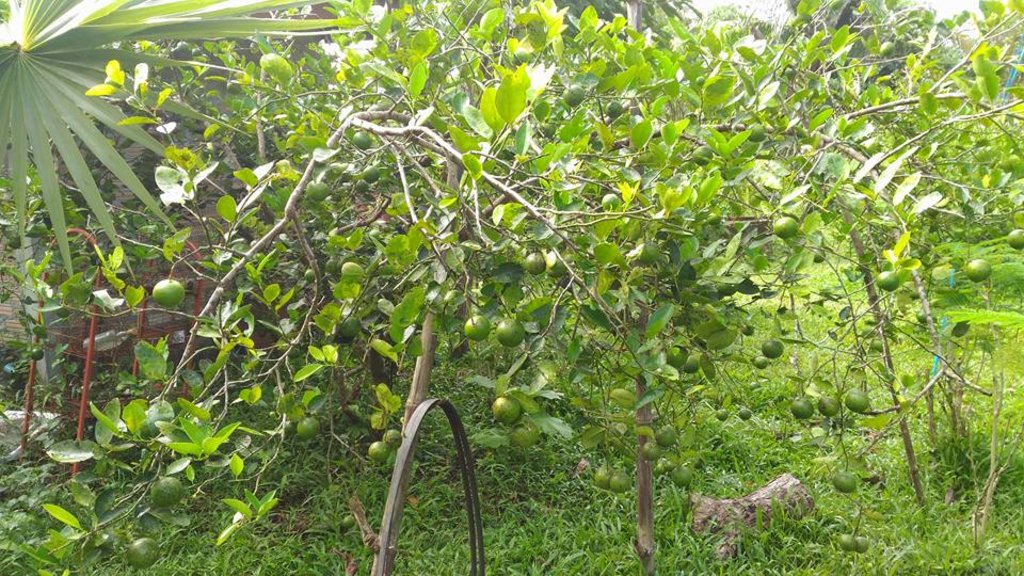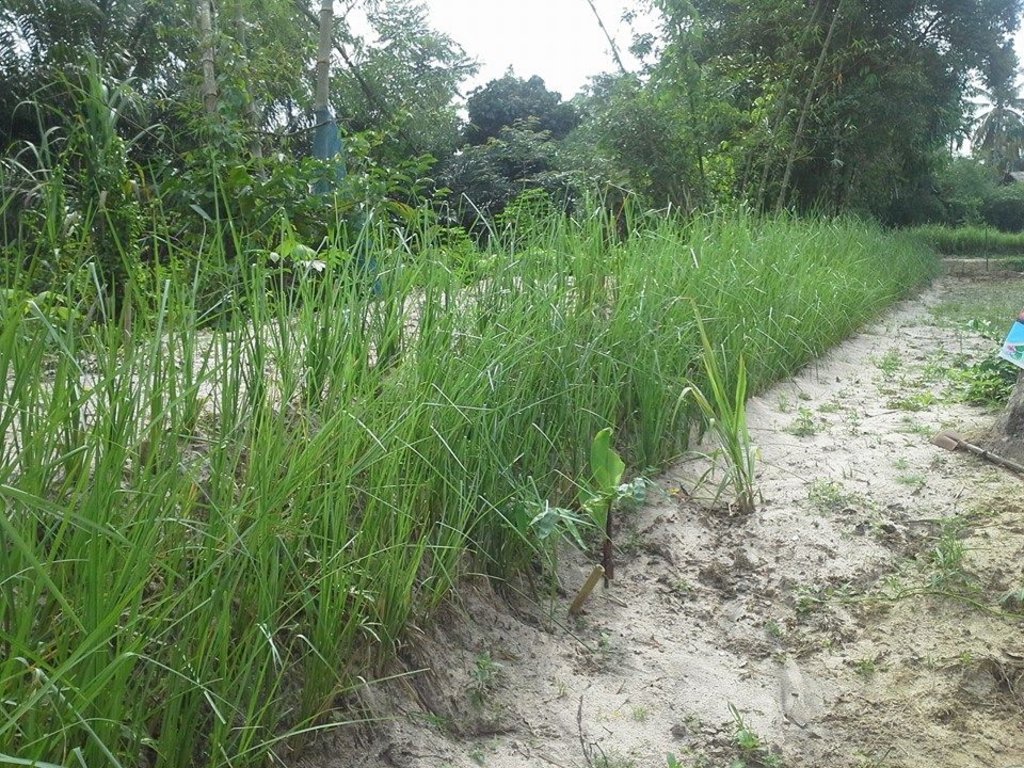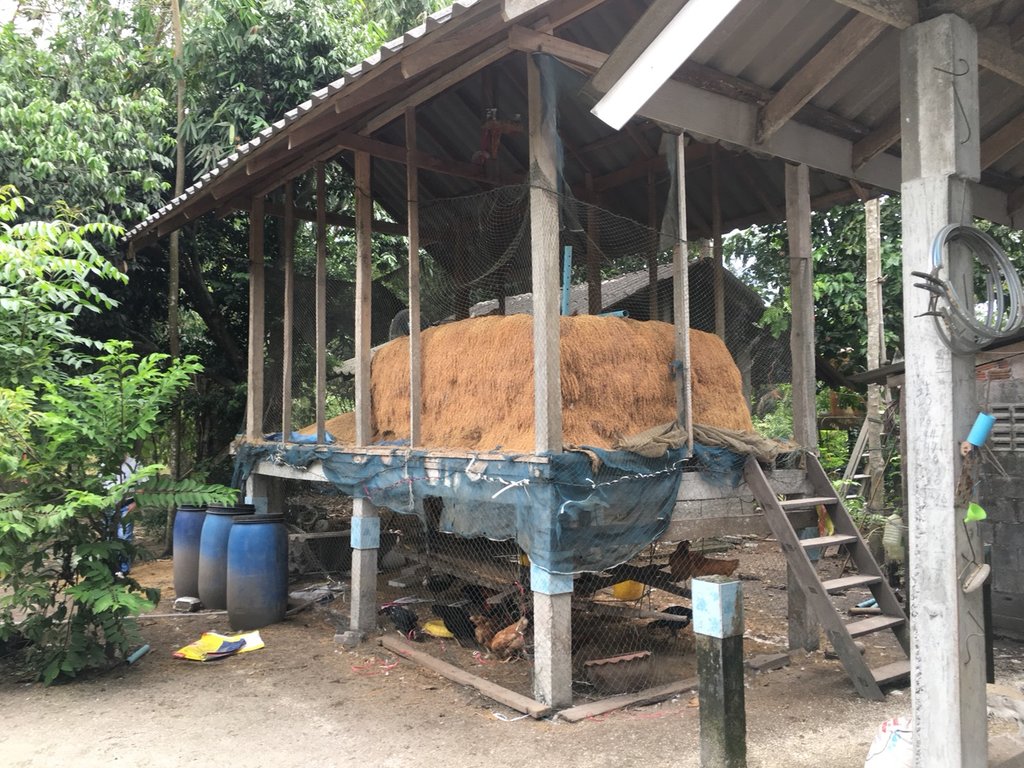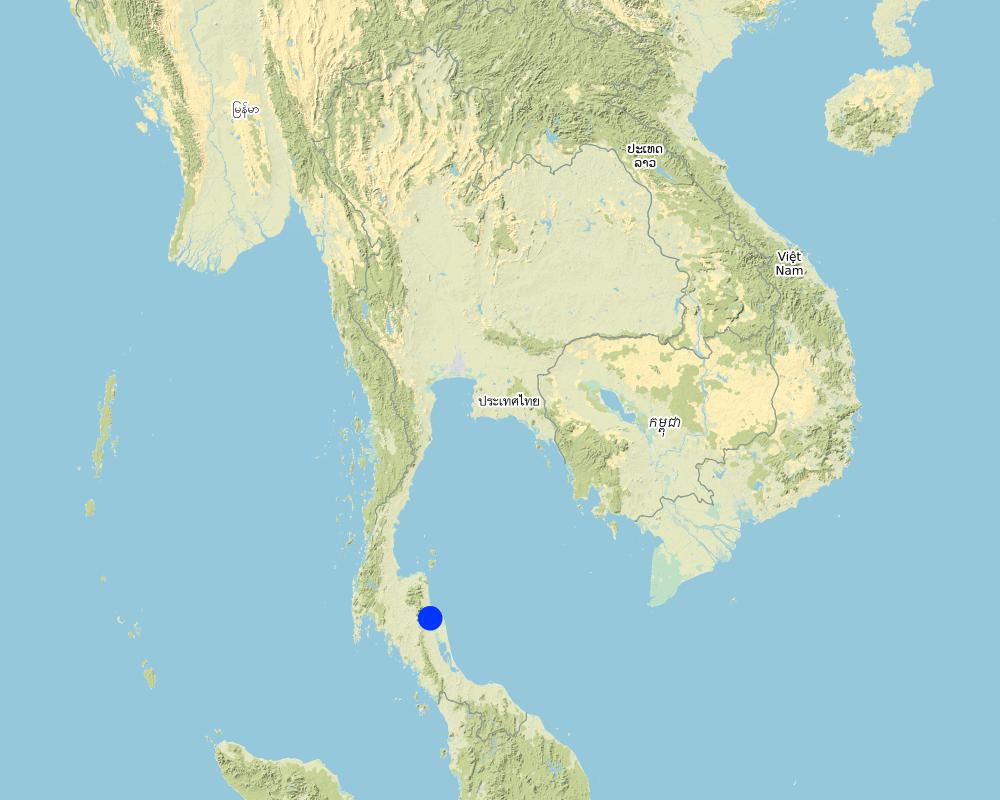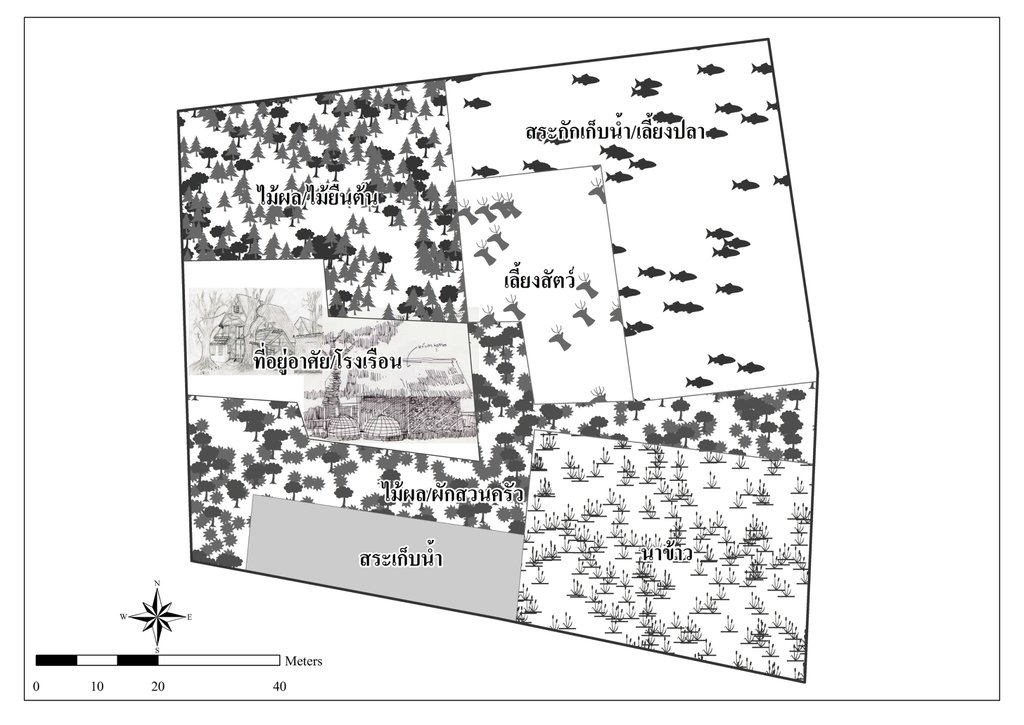The new theory of agriculture for mixed farming systems [ไทย]
- ผู้สร้างสรรค์:
- การอัพเดท:
- ผู้รวบรวม: Prapa Taranet
- ผู้เรียบเรียง: –
- ผู้ตรวจสอบ: Rima Mekdaschi Studer, William Critchley
The royal new theory of agriculture
technologies_4146 - ไทย
ดูส่วนย่อย
ขยายทั้งหมด ย่อทั้งหมด1. ข้อมูลทั่วไป
1.2 รายละเอียดที่ติดต่อได้ของผู้รวบรวมและองค์กรที่เกี่ยวข้องในการประเมินและการจัดเตรียมทำเอกสารของเทคโนโลยี
วิทยากรหลัก
ผู้ใช้ที่ดิน:
Singhophon Chaung
ไทย
ชื่อของโครงการซึ่งอำนวยความสะดวกในการทำเอกสารหรือการประเมินเทคโนโลยี (ถ้าเกี่ยวข้อง)
Decision Support for Mainstreaming and Scaling out Sustainable Land Management (GEF-FAO / DS-SLM)ชื่อขององค์กรซึ่งอำนวยความสะดวกในการทำเอกสารหรือการประเมินเทคโนโลยี (ถ้าเกี่ยวข้อง)
Land Development Department (Land Development Department) - ไทย1.3 เงื่อนไขการใช้ข้อมูลที่ได้บันทึกผ่านทาง WOCAT
ผู้รวบรวมและวิทยากรหลักยอมรับเงื่อนไขเกี่ยวกับการใช้ข้อมูลที่ถูกบันทึกผ่านทาง WOCAT:
ใช่
1.4 การเปิดเผยเรื่องความยั่งยืนของเทคโนโลยีที่ได้อธิบายไว้
เทคโนโลยีที่ได้อธิบายไว้นี้เป็นปัญหาของความเสื่อมโทรมโทรมของที่ดินหรือไม่ จึงไม่ได้รับการยอมรับว่าเป็นเทคโนโลยีเพื่อการจัดการที่ดินอย่างยั่งยืน:
ไม่ใช่
2. การอธิบายลักษณะของเทคโนโลยี SLM
2.1 การอธิบายแบบสั้น ๆ ของเทคโนโลยี
คำจำกัดความของเทคโนโลยี:
Allocating and managing small-scale farm areas to make them suitable for agricultural production under the highest levels of integration and efficiency.
2.2 การอธิบายแบบละเอียดของเทคโนโลยี
คำอธิบาย:
The new theory of agriculture is the application of improved mixed farming systems to poor farmers with smallholdings - for example in Chang Sai sub-district, Phra Phrom district, Nakhon Si Thammarat province, Thailand. The most important concept underlying the new theory of farming is efficient allocation of land to serve the different needs of farm households. This includes paddy fields, farm ponds for water and fish, and cash crops, fruit trees, and trees for farm income, plus a residential area. It's goal is solving the problem of shortage of land and water resources, which is a very serious problem in Thailand, in order to help smallholder farmers make a living. Apart from the fact that the size of the farm and water resources are the limiting factors in this area, the land is also degraded by both natural and human activities. The area is classified as sand dunes with low to very low soil fertility where farmers mostly grow the same crops continuously. This results in high risk of fluctuations in the amount of production - and insufficient food crop production for household consumption. Therefore, land allocation for agriculture under the concept of the new theory of agriculture is the appropriate use of resources in small-scale areas for optimal benefits and increases in household incomes. Nowadays, farmers in adjacent areas are realizing the benefits obtained from land allocation, and they have formed a group to improve the use of their small-scale holdings for optimal benefits.
The new agricultural theory was initiated by His Majesty the Late King Bhumibol Adulyadej of Thailand to provide help for farmers with small-scale farms. For land allocation, the land is divided into 4 parts. Part 1 is designated for a pond to store rainwater during the rainy season and to supply water to grow crops in the dry season as well as for raising aquatic animals (fish, field crabs) and plants (such as morning glory, water mimosa, etc.). Part 2 is set aside for rice cultivation during the rainy season as the daily staple in households throughout the year, which cuts down on expenses and allows the farmers to be self-reliant. Part 3 is used for growing fruit trees, perennials, vegetables, and field crops for daily consumption. If there is any surplus from consumption, it can be sold. Part 4 is used for dwellings, animal husbandry, roads and other structures - including barns, strawstacks, compost, houses, mushroom nurseries, stalls, flowering-plants, ornamental plants, home-grown vegetables in backyard gardens. The proportion of the area in each section can be adjusted for either increase or decrease depending on the conditions of each location and the necessity of farmers who make use of the area, but it is usually 30:30:30:10.
2.3 รูปภาพของเทคโนโลยี
2.5 ประเทศภูมิภาค หรือสถานที่ตั้งที่เทคโนโลยีได้นำไปใช้และได้รับการครอบคลุมโดยการประเมินนี้
ประเทศ:
ไทย
ภูมิภาค/รัฐ/จังหวัด:
Nakhon Si Thammarat province
ข้อมูลจำเพาะเพิ่มเติมของสถานที่ตั้ง :
Chang Sai sub-district, Phra Phrom district
ระบุการกระจายตัวของเทคโนโลยี:
- ใช้ ณ จุดที่เฉพาะเจาะจงหรือเน้นไปยังบริเวณพื้นที่ขนาดเล็ก
Is/are the technology site(s) located in a permanently protected area?
ไม่ใช่
Map
×2.6 วันที่การดำเนินการ
ระบุปีที่ใช้:
2010
2.7 คำแนะนำของเทคโนโลยี
ให้ระบุว่าเทคโนโลยีถูกแนะนำเข้ามาอย่างไร:
- ทางโครงการหรือจากภายนอก
ความคิดเห็น (ประเภทของโครงการ เป็นต้น) :
This technology was initiated by His Majesty the Late King Bhumibol Adulyadej of Thailand and disseminated to farmers by several departments under Ministry of Agriculture and Cooperatives
3. การจัดประเภทของเทคโนโลยี SLM
3.1 วัตถุประสงค์หลักของเทคโนโลยี
- ปรับปรุงการผลิตให้ดีขึ้น
- ลด ป้องกัน ฟื้นฟู การเสื่อมโทรมของที่ดิน
- สร้างผลกระทบทางด้านเศรษฐกิจที่เป็นประโยชน์
3.2 ประเภทของการใช้ที่ดินในปัจจุบันที่ได้นำเทคโนโลยีไปใช้
Land use mixed within the same land unit:
ไม่ใช่

พื้นที่ปลูกพืช

อื่น ๆ
ระบุ:
Mixed farming system
ข้อสังเกต:
Cropland mixed with aquatic animals
แสดงความคิดเห็น:
Crops include rice, vegetable, limes, tropical fruits, and trees, while aquatic animals include a variety of fishes and crabs.
3.3 Has land use changed due to the implementation of the Technology?
Has land use changed due to the implementation of the Technology?
- Yes (Please fill out the questions below with regard to the land use before implementation of the Technology)
Land use mixed within the same land unit:
ไม่ใช่

พื้นที่ปลูกพืช
- Mixed: Fruit trees, aquaculture and annual cropping
Is intercropping practiced?
ไม่ใช่
Is crop rotation practiced?
ไม่ใช่
3.4 การใช้น้ำ
การใช้น้ำของที่ดินที่มีการใช้เทคโนโลยีอยู่:
- จากน้ำฝน
3.5 กลุ่ม SLM ที่ตรงกับเทคโนโลยีนี้
- การเก็บเกี่ยวน้ำ
- สวนครัว
3.6 มาตรการ SLM ที่ประกอบกันเป็นเทคโนโลยี

มาตรการจัดการพืช
- A1: พืช/สิ่งปกคลุมดิน
- A2: อินทรียวัตถุในดิน/ความอุดมสมบูรณ์ในดิน

มาตรการอนุรักษ์ด้วยวิธีพืช
- V2: หญ้าและไม้ยืนต้น

มาตรการอนุรักษ์ด้วยโครงสร้าง
- S5: เขื่อน ชั้นดินที่แน่นแข็งบ่อน้ำ

มาตรการอนุรักษ์ด้วยการจัดการ
- M2: การเปลี่ยนแปลงของการจัดการหรือระดับความเข้มข้น

มาตรการอื่น ๆ
ระบุ:
Introduction of aquatic animal
3.7 รูปแบบหลักของการเสื่อมโทรมของที่ดินที่ได้รับการแก้ไขโดยเทคโนโลยี

การเสื่อมโทรมของดินทางด้านเคมี
- Cn (Fertility decline): ความอุดมสมบูรณ์และปริมาณอินทรียวัตถุในดินถูกทำให้ลดลงไป (ไม่ได้เกิดจากสาเหตุการกัดกร่อน)

การเสื่อมโทรมของน้ำ
- Ha (Aridification): การเกิดความแห้งแล้ง
3.8 การป้องกัน การลดลง หรือการฟื้นฟูความเสื่อมโทรมของที่ดิน
ระบุเป้าหมายของเทคโนโลยีกับความเสื่อมโทรมของที่ดิน:
- ลดความเสื่อมโทรมของดิน
4. ข้อมูลจำเพาะด้านเทคนิค กิจกรรมการนำไปปฏิบัติใช้ ปัจจัยนำเข้า และค่าใช้จ่าย
4.1 แบบแปลนทางเทคนิคของเทคโนโลยี
ข้อมูลจำเพาะด้านเทคนิค (แบบแปลนทางเทคนิคของเทคโนโลยี):
Land allocation according to new theory of agriculture in the area with the size of 5.3 rai (0.85 ha) of informants by dividing the land into 4 parts, first part is the ponds accounting for 1.5 rai (about 28% of the total area), second part is paddy field accounting for 1 rai (about 19% of the total area), third part is for growing fruit-bearing trees, home-grown vegetables, perennials accounting for 1.3 rai (about 25% of the total area) and last is for building construction for dwelling, animal husbandry and other constructions accounting for 1.5 rai ( about 28% of the total area).
ผู้เขียน:
Prapa Taranet
วันที่:
20/09/2018
4.2 ข้อมูลทั่วไปเกี่ยวกับการคำนวณปัจจัยนำเข้าและค่าใช้จ่าย
ให้ระบุว่าค่าใช้จ่ายและปัจจัยนำเข้าได้รับการคำนวณอย่างไร:
- ต่อพื้นที่ที่ใช้เทคโนโลยี
ระบุขนาดและหน่วยพื้นที่:
5.3
If using a local area unit, indicate conversion factor to one hectare (e.g. 1 ha = 2.47 acres): 1 ha =:
6.25
อื่นๆ หรือสกุลเงินประจำชาติ (ระบุ):
Baht
If relevant, indicate exchange rate from USD to local currency (e.g. 1 USD = 79.9 Brazilian Real): 1 USD =:
33.0
ระบุค่าเฉลี่ยของค่าจ้างในการจ้างแรงงานต่อวัน:
300 Baht
4.3 กิจกรรมเพื่อการจัดตั้ง
| กิจกรรม | Timing (season) | |
|---|---|---|
| 1. | Pond construction | dry season |
| 2. | Labours | rainy season |
| 3. | Seeds | rainy season |
| 4. | Seedling | rainy season |
| 5. | Aqautic animals (fishes and field crabs) | rainy season |
4.4 ค่าใช้จ่ายของปัจจัยนำเข้าที่จำเป็นสำหรับการจัดตั้ง
| ปัจจัยนำเข้า | หน่วย | ปริมาณ | ค่าใช้จ่ายต่อหน่วย | ค่าใช้จ่ายทั้งหมดต่อปัจจัยนำเข้า | %ของค่าใช้จ่ายที่ก่อให้เกิดขึ้นโดยผู้ใช้ที่ดิน | |
|---|---|---|---|---|---|---|
| แรงงาน | Cultivation | days | 60.0 | 300.0 | 18000.0 | 100.0 |
| อุปกรณ์ | Hiring tractors for pond construction | ponds | 3.0 | 16000.0 | 48000.0 | 70.0 |
| วัสดุด้านพืช | Seeds | Kilogram | 300.0 | 10.0 | 3000.0 | |
| วัสดุด้านพืช | Seedlings | Plants | 100.0 | 50.0 | 5000.0 | 80.0 |
| ปุ๋ยและสารฆ่า/ยับยั้งการเจริญเติบโตของสิ่งมีชีวิต (ไบโอไซด์) | Compost | Ton | 1.0 | 2500.0 | 2500.0 | 50.0 |
| วัสดุสำหรับก่อสร้าง | Roof tiles | each | 240.0 | 60.0 | 14400.0 | |
| วัสดุสำหรับก่อสร้าง | Cement | bags | 8.0 | 100.0 | 800.0 | |
| วัสดุสำหรับก่อสร้าง | Sand and rocks | ton | 1.0 | 1650.0 | 1650.0 | |
| วัสดุสำหรับก่อสร้าง | Pillars | each | 12.0 | 100.0 | 1200.0 | |
| อื่น ๆ | Fishes and crabs | each | 2500.0 | 1.0 | 2500.0 | |
| ค่าใช้จ่ายทั้งหมดของการจัดตั้งเทคโนโลยี | 97050.0 | |||||
| Total costs for establishment of the Technology in USD | 2940.91 | |||||
ถ้าผู้ใช้ที่ดินรับภาระน้อยกว่า 100% ของค่าใช้จ่าย ให้ระบุว่าใครเป็นผู้รับผิดชอบส่วนที่เหลือ:
Government agencies
4.5 การบำรุงรักษาสภาพหรือกิจกรรมที่เกิดขึ้นเป็นประจำ
| กิจกรรม | ช่วงระยะเวลา/ความถี่ | |
|---|---|---|
| 1. | Labours | throughout the year |
| 2. | Seeds | rainy season |
| 3. | Seedlings | rainy season |
| 4. | Aquatic animal | 9 months |
4.6 ค่าใช้จ่ายของปัจจัยนำเข้าและกิจกรรมที่เกิดขึ้นเป็นประจำที่ต้องการการบำรุงรักษา (ต่อปี)
| ปัจจัยนำเข้า | หน่วย | ปริมาณ | ค่าใช้จ่ายต่อหน่วย | ค่าใช้จ่ายทั้งหมดต่อปัจจัยนำเข้า | %ของค่าใช้จ่ายที่ก่อให้เกิดขึ้นโดยผู้ใช้ที่ดิน | |
|---|---|---|---|---|---|---|
| แรงงาน | Cultivation | days | 260.0 | 300.0 | 78000.0 | 100.0 |
| แรงงาน | Cultivation | days | 260.0 | 300.0 | 78000.0 | 100.0 |
| ปุ๋ยและสารฆ่า/ยับยั้งการเจริญเติบโตของสิ่งมีชีวิต (ไบโอไซด์) | Compost | ton | 1.0 | 2500.0 | 2500.0 | 50.0 |
| อื่น ๆ | Fishes and crabs | each | 5000.0 | 1.0 | 5000.0 | 30.0 |
| อื่น ๆ | Feeding | month | 9.0 | 5000.0 | 45000.0 | 100.0 |
| ค่าใช้จ่ายทั้งหมดของการบำรุงรักษาสภาพเทคโนโลยี | 208500.0 | |||||
| Total costs for maintenance of the Technology in USD | 6318.18 | |||||
ถ้าผู้ใช้ที่ดินรับภาระน้อยกว่า 100% ของค่าใช้จ่าย ให้ระบุว่าใครเป็นผู้รับผิดชอบส่วนที่เหลือ:
Government agencies support some inuts
4.7 ปัจจัยสำคัญที่สุดที่มีผลกระทบต่อค่าใช้จ่าย
ปัจจัยสำคัญที่สุดที่มีผลกระทบต่อค่าใช้จ่ายต่างๆ:
Water - if there is a lack of water during the dry season, some agricultural activities may not be practiced. This leads to a reduction of agricultural cost; however, this also leads to a reduction of a household income during that period.
5. สิ่งแวดล้อมทางธรรมชาติและของมนุษย์
5.1 ภูมิอากาศ
ฝนประจำปี
- < 250 ม.ม.
- 251-500 ม.ม.
- 501-750 ม.ม.
- 751-1,000 ม.ม.
- 1,001-1,500 ม.ม.
- 1,501-2,000 ม.ม.
- 2,001-3,000 ม.ม.
- 3,001-4,000 ม.ม.
- > 4,000 ม.ม.
ระบุชื่อของสถานีตรวดวัดอากาศที่ใช้อ้างอิงคือ:
Nakhon Si Thammarat meteorological station
เขตภูมิอากาศเกษตร
- กึ่งชุ่มชื้น
5.2 สภาพภูมิประเทศ
ค่าเฉลี่ยความลาดชัน:
- ราบเรียบ (0-2%)
- ลาดที่ไม่ชัน (3-5%)
- ปานกลาง (6-10%)
- เป็นลูกคลื่น (11-15%)
- เป็นเนิน (16-30%)
- ชัน (31-60%)
- ชันมาก (>60%)
ธรณีสัณฐาน:
- ที่ราบสูง/ที่ราบ
- สันเขา
- ไหล่เขา
- ไหล่เนินเขา
- ตีนเนิน
- หุบเขา
ระดับความสูง:
- 0-100 เมตร
- 101-500 เมตร
- 501-1,000 เมตร
- 1,001-1,500 เมตร
- 1,501-2,000 เมตร
- 2,001-2,500 เมตร
- 2,501-3,000 เมตร
- 3,001-4,000 เมตร
- > 4,000 เมตร
ให้ระบุถ้าเทคโนโลยีได้ถูกนำไปใช้:
- ไม่เกี่ยวข้อง
5.3 ดิน
ค่าเฉลี่ยความลึกของดิน:
- ตื้นมาก (0-20 ซ.ม.)
- ตื้น (21-50 ซ.ม.)
- ลึกปานกลาง (51-80 ซ.ม.)
- ลึก (81-120 ซ.ม.)
- ลึกมาก (>120 ซ.ม.)
เนื้อดิน (ดินชั้นบน):
- หยาบ/เบา (ดินทราย)
เนื้อดินล่าง (> 20 ซ.ม.ต่ำจากผิวดิน):
- หยาบ/เบา (ดินทราย)
อินทรียวัตถุในดิน:
- ต่ำ (<1%)
(ถ้ามี) ให้แนบคำอธิบายเรื่องดินแบบเต็มหรือระบุข้อมูลที่มีอยู่ เช่น ชนิดของดิน ค่า pH ของดินหรือความเป็นกรดของดิน ความสามารถในการแลกเปลี่ยนประจุบวก ไนโตรเจน ความเค็ม เป็นต้น:
The soil in this area is sandy soil, classified into Coated, Isohyperthermic and Typic Quartzipsamments. The parent material is beach ridge or sand dune. The area condition is quite flat up to little undulating with the slope of 1.5%. The soil is very deep and well drained. Water permeability is fast but runoff on the soil surface occurs slowly. The soil reaction is very acidic to a little acidic (pH 5.0 - 6.5) throughout the soil profile. The soil fertility is low. Land use limitation is low fertility and a shortage of water.
5.4 ความเป็นประโยชน์และคุณภาพของน้ำ
ระดับน้ำใต้ดิน:
5-50 เมตร
น้ำไหลบ่าที่ผิวดิน:
ปานกลาง
คุณภาพน้ำ (ที่ยังไม่ได้บำบัด):
เป็นน้ำใช้เพื่อการเกษตรเท่านั้น (การชลประทาน)
Water quality refers to:
surface water
ความเค็มของน้ำเป็นปัญหาหรือไม่:
ไม่ใช่
กำลังเกิดน้ำท่วมในพื้นที่หรือไม่:
ไม่ใช่
5.5 ความหลากหลายทางชีวภาพ
ความหลากหลายทางชนิดพันธุ์:
- ปานกลาง
ความหลากหลายของแหล่งที่อยู่:
- ปานกลาง
5.6 ลักษณะของผู้ใช้ที่ดินที่นำเทคโนโลยีไปปฏิบัติใช้
อยู่กับที่หรือเร่ร่อน:
- อยู่กับที่
แนวทางการตลาดของระบบการผลิต:
- mixed (subsistence/ commercial)
รายได้ที่มาจากนอกฟาร์ม:
- < 10% ของรายได้ทั้งหมด
ระดับของความมั่งคั่งโดยเปรียบเทียบ:
- พอมีพอกิน
เป็นรายบุคคล/ครัวเรือน:
- เป็นรายบุคคล/ครัวเรือน
ระดับของการใช้เครื่องจักรกล:
- งานที่ใช้แรงกาย
เพศ:
- ชาย
อายุของผู้ใช้ที่ดิน:
- ผู้สูงอายุ
5.7 Average area of land used by land users applying the Technology
- < 0.5 เฮกตาร์
- 0.5-1 เฮกตาร์
- 1-2 เฮกตาร์
- 2-5 เฮกตาร์
- 5-15 เฮกตาร์
- 15-50 เฮกตาร์
- 50-100 เฮกตาร์
- 100-500 เฮกตาร์
- 500-1,000 เฮกตาร์
- 1,000-10,000 เฮกตาร์
- >10,000 เฮกตาร์
พิจารณาว่าเป็นขนาดเล็ก กลาง หรือขนาดใหญ่ (ซึ่งอ้างอิงถึงบริบทระดับท้องถิ่น):
- ขนาดเล็ก
5.8 กรรมสิทธิ์ในที่ดิน สิทธิในการใช้ที่ดินและสิทธิในการใช้น้ำ
กรรมสิทธิ์ในที่ดิน:
- รายบุคคล ได้รับสิทธิครอบครอง
สิทธิในการใช้ที่ดิน:
- รายบุคคล
สิทธิในการใช้น้ำ:
- รายบุคคล
5.9 การเข้าถึงบริการและโครงสร้างพื้นฐาน
สุขภาพ:
- จน
- ปานกลาง
- ดี
การศึกษา:
- จน
- ปานกลาง
- ดี
ความช่วยเหลือทางด้านเทคนิค:
- จน
- ปานกลาง
- ดี
การจ้างงาน (เช่น ภายนอกฟาร์ม):
- จน
- ปานกลาง
- ดี
ตลาด:
- จน
- ปานกลาง
- ดี
พลังงาน:
- จน
- ปานกลาง
- ดี
ถนนและการขนส่ง:
- จน
- ปานกลาง
- ดี
น้ำดื่มและการสุขาภิบาล:
- จน
- ปานกลาง
- ดี
บริการด้านการเงิน:
- จน
- ปานกลาง
- ดี
6. ผลกระทบและสรุปคำบอกกล่าว
6.1 ผลกระทบในพื้นที่ดำเนินการ (On-site) จากการใช้เทคโนโลยี
ผลกระทบทางด้านเศรษฐกิจและสังคม
การผลิต
การผลิตพืชผล
จำนวนก่อน SLM:
100
หลังจาก SLM:
500
แสดงความคิดเห็น/ระบุ:
Considering from rice production in 1 rai
คุณภาพพืชผล
การเสี่ยงต่อความล้มเหลวในการผลิต
แสดงความคิดเห็น/ระบุ:
As farmers allocate the land to different types of crop, they can evaluate the suitable types of crops for the markets and climatic conditions
ความเป็นประโยชน์และคุณภาพของน้ำ
การมีน้ำไว้ให้ปศุสัตว์
การมีน้ำไว้ให้สำหรับการชลประทาน
แสดงความคิดเห็น/ระบุ:
Rainwater can be collected in the ponds and this can be a supply for cultivation during the dry season
รายได้และค่าใช้จ่าย
ค่าใช่จ่ายของปัจจัยการผลิตทางการเกษตร
รายได้จากฟาร์ม
ความหลากหลายของแหล่งผลิตรายได้
ภาระงาน
ผลกระทบด้านสังคมวัฒนธรรมอื่น ๆ
SLM หรือความรู้เรื่องความเสื่อมโทรมของที่ดิน
แสดงความคิดเห็น/ระบุ:
The knowledge about SLM comes through the support of the government agencies
ผลกระทบด้านนิเวศวิทยา
ดิน
ความชื้นในดิน
สิ่งปกคลุมดิน
อินทรียวัตถุในดิน/ต่ำกว่าดินชั้น C
แสดงความคิดเห็น/ระบุ:
Application of compost in the farm leads to an increase in soil organic matter
ความหลากหลายทางชีวภาพของพืชและสัตว์
ชนิดพันธุ์ที่ให้ประโยชน์
แสดงความคิดเห็น/ระบุ:
Earthworms, Birds, Bees, Cicada, and Varanus.
6.2 ผลกระทบนอกพื้นที่ดำเนินการ (Off-site) จากการใช้เทคโนโลยี
การเกิดมลพิษในน้ำบาดาลหรือแม่น้ำ
แสดงความคิดเห็น/ระบุ:
Agrichemical products are not applied to the farmland, resulting in less soil contamination to environment
6.3 การเผชิญและความตอบสนองของเทคโนโลยีต่อการเปลี่ยนแปลงสภาพภูมิอากาศที่ค่อยเป็นค่อยไป และสภาพรุนแรงของภูมิอากาศ / ภัยพิบัติ (ที่รับรู้ได้โดยผู้ใช้ที่ดิน)
การเปลี่ยนแปลงสภาพภูมิอากาศที่ค่อยเป็นค่อยไป
การเปลี่ยนแปลงสภาพภูมิอากาศที่ค่อยเป็นค่อยไป
| ฤดู | increase or decrease | เทคโนโลยีมีวิธีการรับมืออย่างไร | |
|---|---|---|---|
| อุณหภูมิตามฤดูกาล | ฤดูร้อน | เพิ่มขึ้น | ปานกลาง |
6.4 การวิเคราะห์ค่าใช้จ่ายและผลประโยชน์ที่ได้รับ
ผลประโยชน์ที่ได้รับเปรียบเทียบกับค่าใช้จ่ายในการจัดตั้งเป็นอย่างไร (จากมุมมองของผู้ใช้ที่ดิน)
ผลตอบแทนระยะสั้น:
เป็นกลางหรือสมดุล
ผลตอบแทนระยะยาว:
ด้านบวก
ผลประโยชน์ที่ได้รับเปรียบเทียบกับค่าใช้จ่ายในการบำรุงรักษาหรือต้นทุนที่เกิดขึ้นซ้ำอีก เป็นอย่างไร (จากมุมมองของผู้ใช้ที่ดิน)
ผลตอบแทนระยะสั้น:
ด้านบวก
ผลตอบแทนระยะยาว:
ด้านบวก
6.5 การปรับตัวของเทคโนโลยี
- 11-50%
ถ้ามีข้อมูลให้บอกปริมาณด้วย (จำนวนของครัวเรือนหรือครอบคลุมพื้นที่):
Members in the community (about 50-60 households in the community) and parts of the outside community nearby show interest in this technology because they see that it can increase household incomes and start to implement it in their own areas. However, allocation of the land differs according to the area conditions and the needs of the owners themselves.
Of all those who have adopted the Technology, how many did so spontaneously, i.e. without receiving any material incentives/ payments?
- 0-10%
แสดงความคิดเห็น:
The government provides some inputs for farmers who want to apply this technology to their farmland such as fish and rice seeds. Then, most farmers get some support before they start the activity on the farm.
6.6 การปรับตัว
เทคโนโลยีได้รับการปรับเปลี่ยนเมื่อเร็วๆนี้ เพื่อให้ปรับตัวเข้ากับสภาพที่กำลังเปลี่ยนแปลงหรือไม่:
ใช่
ถ้าตอบว่าใช่ ให้ระบุว่าเงื่อนไขการเปลี่ยนแปลงใดที่ถูกปรับตัว:
- การเปลี่ยนแปลงของตลาด
ให้ระบุการปรับตัวของเทคโนโลยี (การออกแบบ วัสดุหรือชนิดพันธุ์ เป็นต้น):
Since organic markets are increasing in the area, then some farmers produce without using agrichemical products. This allows farmers to improve the prices.
6.7 จุดแข็ง / ข้อได้เปรียบ / โอกาสของเทคโนโลยี
| จุดแข็ง / ข้อได้เปรียบ / โอกาสในทัศนคติของผู้ใช้ที่ดิน |
|---|
| Water can be available even in the dry season since this technology includes the farm pond construction for rainwater storage. |
| Farmers should be able to grow enough rice for the whole year’s consumption. |
| Production planning can be done for the household consumption and supply to the market. |
| จุดแข็ง / ข้อได้เปรียบ / โอกาสในทัศนคติของผู้รวบรวมหรือวิทยากรหลัก |
|---|
| Allocation of the land into 4 parts according to the new theory of agriculture is considered an appropriate option for smallholder farmers who are having small farmland and water shortage. This is due to they can plan what crops, and when, to grow for each growing season based on climatic condition and market. Importantly, farmers learn how to plan the production that will be distributed to the market and for making a living. |
6.8 จุดอ่อน / ข้อเสียเปรียบ / ความเสี่ยงของเทคโนโลยีและวิธีการแก้ไข
| จุดอ่อน / ข้อเสียเปรียบ / ความเสี่ยงในทัศนคติของผู้ใช้ที่ดิน | มีวิธีการแก้ไขได้อย่างไร |
|---|---|
| A lack of household labor results in some farmers adopted only part of technology where the efficiency of this technology may be lower than the adoption of full management. | Mose farmers hire labor or mechanical equipment to help them farming. although this increases the farming cost, it helps farmers to get their work done in time. |
| The cost of investment is rather high, especially for digging the pond. | Farmers ask the support from the government. While some farmers receive 80% help from the government, foundations, and the private sector for digging the ponds, others receive less support from the government. |
| Farmers have limited land for farming, to allocate the land to usual allocation as recommendation may not be suitable. | Farmers changed or improved the allocation ratio by themselves based on the land conditions, climatic condition, and the environment. For example, some farmers who have enough water sources in their areas, the size of the pond can be reduced to make room for other uses. |
| จุดอ่อน / ข้อเสียเปรียบ / ความเสี่ยงในทัศนคติของผู้รวบรวมหรือวิทยากรหลัก | มีวิธีการแก้ไขได้อย่างไร |
|---|---|
| Due to the fact that managing the area with many activities may require more time to take action than monoculture farming, which cannot interest some farmers to practice. Furthermore, it may take time to make it worth the paid expenses due to complexity, little understanding, insufficient labor force, and more hiring may require. | The government needs to take action in the areas to provide more knowledge on this technology and find the solution to the problems. |
7. การอ้างอิงและการเชื่อมต่อ
7.1 วิธีการและแหล่งข้อมูล
- ไปเยี่ยมชมภาคสนาม การสำรวจพื้นที่ภาคสนาม
1
- การสัมภาษณ์กับผู้ใช้ที่ดิน
1
- การสัมภาษณ์ผู้เชี่ยวชาญด้าน SLM หรือผู้ชำนาญ
1
วันที่เก็บรวบรวมข้อมูล(ภาคสนาม) :
20/09/2018
7.2 การอ้างอิงถึงสิ่งตีพิมพ์
หัวข้อ, ผู้เขียน, ปี, หมายเลข ISBN:
New Theory of Agriculture, 2011, Office of the Royal Development Projects Board.
ชื่อเรื่อง ผู้เขียน ปี ISBN:
http://www.rdpb.go.th/UploadNew/Documents/%E0%B8%97%E0%B8%A4%E0%B8%A9%E0%B8%8E%E0%B8%B5%E0%B9%83%E0%B8%AB%E0%B8%A1%E0%B9%88.pdf
หัวข้อ, ผู้เขียน, ปี, หมายเลข ISBN:
Implementation manual for new theory of agriculture, 2015, Ministry of Agriculture and Cooperatives.
ชื่อเรื่อง ผู้เขียน ปี ISBN:
http://www3.oae.go.th/rdpcc/images/filesdownload/SUFFICIENCY/9.9.pdf
7.3 Links to relevant online information
ชื่อเรื่องหรือคำอธิบาย:
Sufficiency Economy & New Theory
URL:
http://www.chaipat.or.th/eng/concepts-theories/sufficiency-economy-new-theory.html
7.4 General comments
The long-term impact on household income might change or improve if they practice this technology longer period than 8 years.
ลิงก์และโมดูล
ขยายทั้งหมด ย่อทั้งหมดลิงก์
ไม่มีลิงก์
โมดูล
ไม่มีโมดูล


